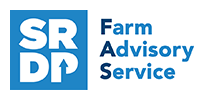Safety When Handling Livestock
21 February 2023Handling and working alongside livestock, particularly newly calved cows and bulls, can be dangerous. All too often we hear of accidents on farm involving livestock with an average of two fatalities per year and over 100 injured on farm each year by cattle. There are also many minor incidents and near misses involving stock that are never talked about.
Many of you in recent weeks may have purchased a new stock bull. Here are a few key things to consider to ensure the safe introduction of the bull to his new environment:
- It is recommended that the bull is washed after the sale or on his arrival home. Your bull will have soaps and sprays used on his coat, which if left in can cause skin irritation and hair loss. However if you are not confident in doing so, make sure someone else is present. Ensure the bull is adequately restrained for doing so and use a nose rope for additional control.
- It is important to give your new bull time to adjust and for him to get used to you. Remember in the run up to the sale, he will have a lot of close contact with people, so it is important he is housed where he can see and hear what is going on around him. Be cautious when the bull first arrives home, as a change of surroundings and diet can temporarily unsettle him.
- He will need to be quarantined before being introduced with stock already on farm, however it’s advisable that there is visual contact with stock. He won’t be used to being isolated.
- Ensure that the bull pen is well light, with plenty space for the bull It is advisable that bull pens allow the bull to be fed and watered from outside the pen or without the need for you to enter the pen.
- Avoid loud noises and sudden movements. These can unsettle and alarm a bull. It is important he is given time to get used to your voice. Also consider the animals blind spot. If he doesn’t see or hear you approach he is more likely to become startled and or kick out which can result in injury to yourself and or the bull.
- When bedding the bull pen ensure that this can be done without the need for direct physical contact. Restrain the bull securely in a self-locking head yoke, or move him to another pen. Depending on your experience with handling bulls, the bull could be haltered and securely tied to a gate.
- Ensure that you have an escape route from pens and handling facilities. Remember that all bulls can be unpredictable. Never turn your back on a new bull or any bull on farm.
For further reading on post purchase management of bulls the following maybe of interest:
Post Purchase Bull Management | Helping farmers in Scotland | Farm Advisory Service (fas.scot)
Sarah Balfour, sarah.balfour@sac.co.uk
Sign up to the FAS newsletter
Receive updates on news, events and publications from Scotland’s Farm Advisory Service

